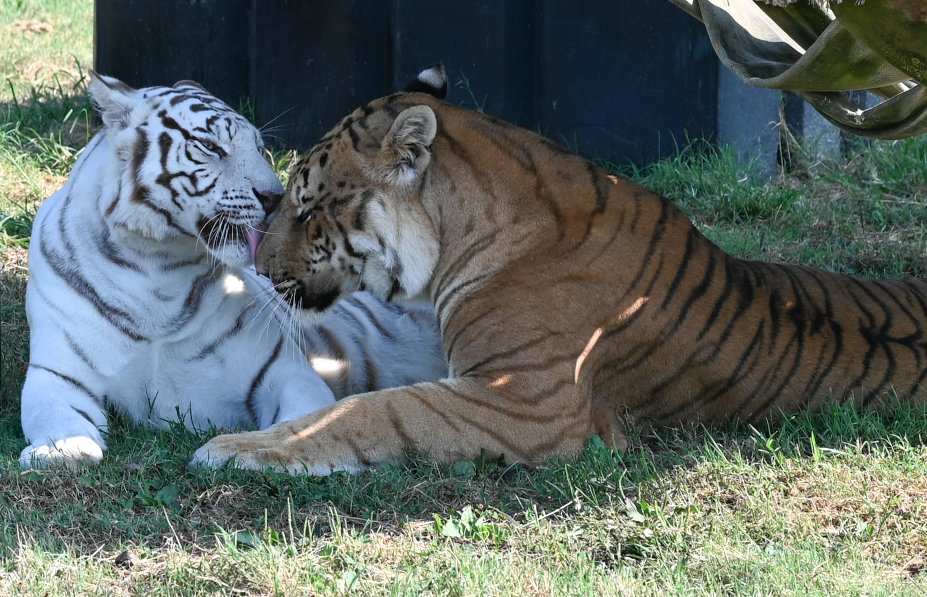In the diverse landscapes of Asia, where the Asiatic lion and Bengal tiger share habitats, one might wonder why these majestic big cats, despite cohabiting territories, rarely engage in cross-species mating. Even though lion and tiger hybrids are produced in captivity as part of the exotic pet trade, those cats have many health issues that would make survival in the wild difficult. In addition, there are other reasons interbreeding does not occur. The answer lies in a combination of biological, behavioral, and ecological factors that underscore the distinct nature of tigers and lions.
At first glance, tigers and lions might seem like close relatives, belonging to the Panthera genus (tigers, lions, jaguars, and leopards). However, the biological disparity between these species goes beyond their external similarities. Tigers possess 38 chromosomes, while lions have 36. The two species also have different reproductive cycles. Female lions typically experience estrus simultaneously, leading to a synchronized breeding season within the pride. In contrast, tigers lack a synchronized breeding season, and the estrus cycle of a female tiger may not align with that of a lioness. This genetic difference and their disparate reproductive processes create natural barriers inhibiting wild interbreeding.

Tigers and lions also have vastly different social structures – an essential ingredient for breeding in wild animals. Lions live in cohesive groups (prides) consisting of related females, their cubs, and a coalition of males. This communal living arrangement fosters cooperative hunting and cub-rearing. In contrast, tigers are primarily solitary animals, except for mating pairs or mothers with cubs. Their solitary nature reduces opportunities for interaction and mating. Tigers and lions are territorial creatures, marking and defending their domains. While their territories may overlap in certain regions, their territorial instincts often deter direct contact. Tigers, primarily, are known for their expansive home ranges, and their solitary lifestyle reduces the likelihood of encountering members of other big cat species for mating purposes.
The coexistence of tigers and lions in specific Asian habitats is a testament to the resilience and adaptability of these big cats. However, their reproductive separation is a harmonious dance between biology and behavior, showcasing the unique evolutionary paths that have shaped these magnificent creatures and highlighting the importance of conserving their identities in the wild.
